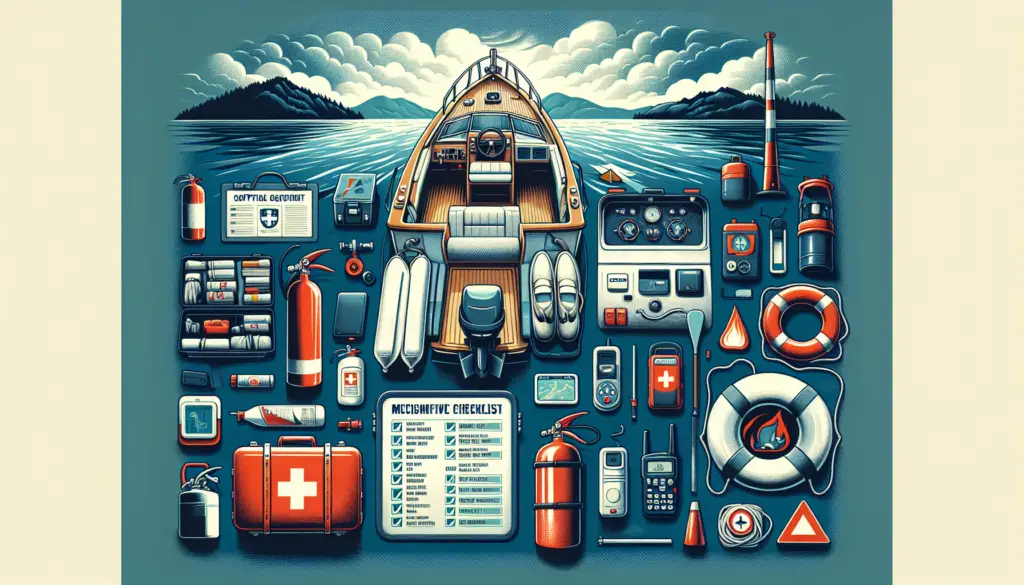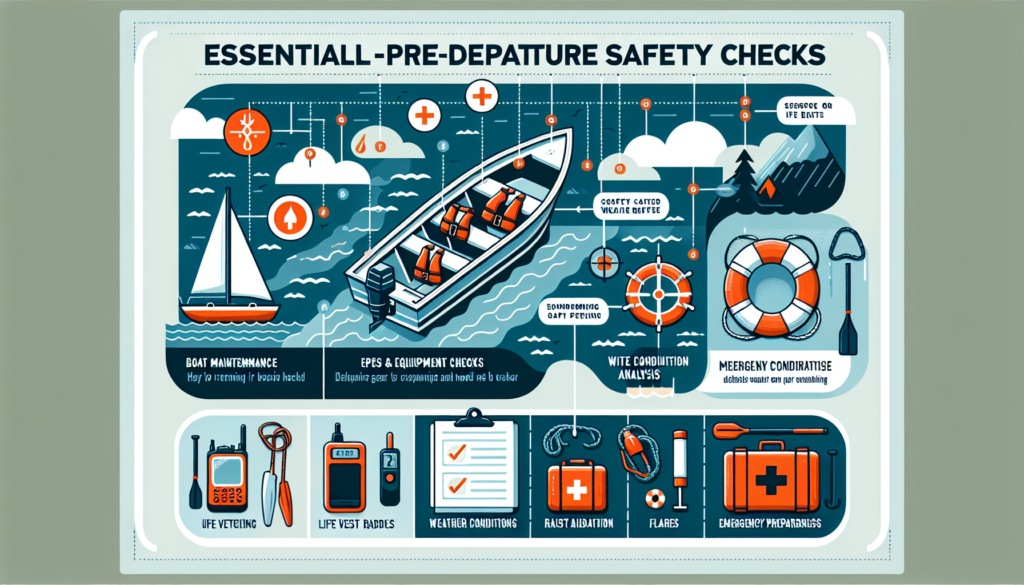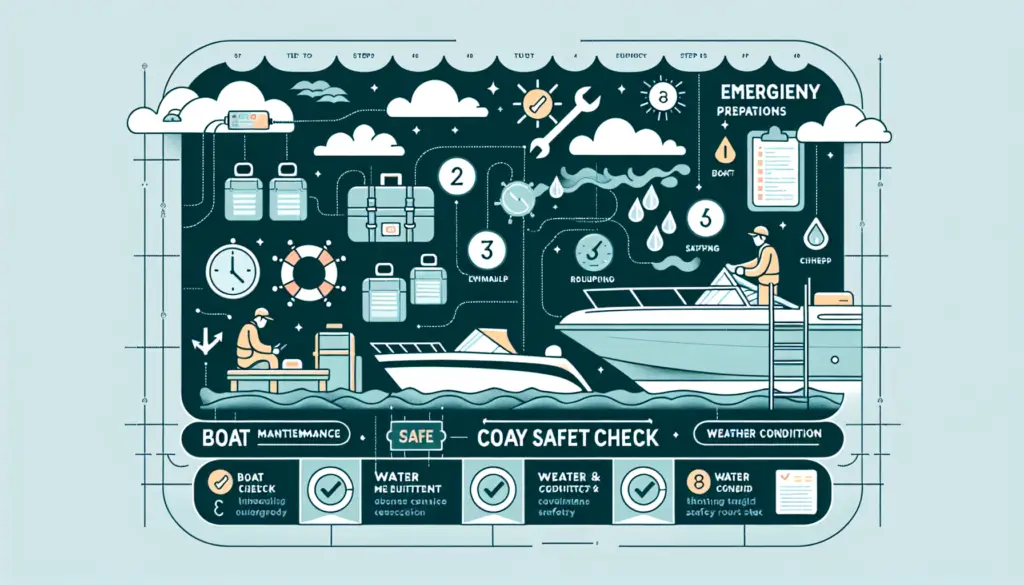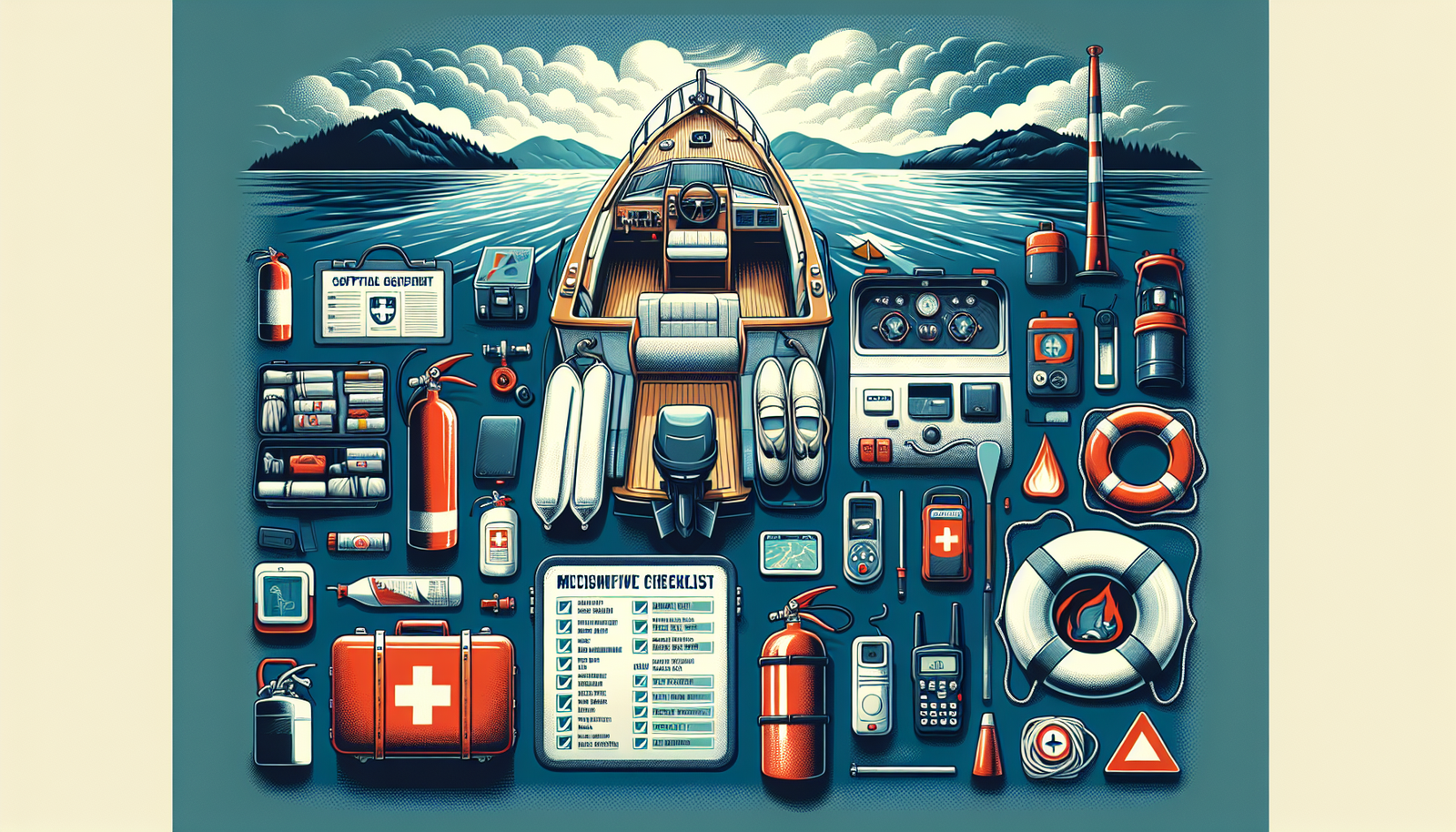Unfurl your sails into the vast waterscape of knowledge with “How To Perform A Safety Check Before Every Boating Trip.” This article snugly fits like a life vest to those who enjoy the call of the open sea or the gentle creek’s lullaby. Guiding you like a compass through the crucial steps to ensure sea or shoreline capers go without a hitch, you’ll learn to fine-tune your pre-launch checklist and become familiar with crucial safety procedures. Be prepared because this is your survival guide, the ultimate secret map to uncharted waters, the ‘X’ marking safety in the world of boating escapades!

Understanding the Importance of a Pre-Trip Safety Check
Embarking on a boating trip is an exceptional experience, a delightful fusion of thrill and tranquility. Yet, behind these thrilling adventures lies an essential preliminary step that can determine the difference between memory-making and misery. The significance of conducting a pre-trip safety check cannot be overemphasized.
Recognizing the Risks of Boating
As ecstatic as you may be about your upcoming trip, it’s crucial to recognize the potential dangers of boating. Unanticipated weather changes, faulty equipment, or inadequate provisions can rapidly culminate in hazardous situations. Drowning, collisions, or being left stranded are severe possibilities you must be prepared for. Knowledge is power, and understanding the risks enables you to prepare effectively.
Ensuring Safety Through Routine Checks
Routine checks serve as your shield against the probable disasters lurking in boating adventures. Checking the weather, reviewing the mechanical status of your boat, inspecting safety gear, communication devices, lighting systems, provisions, and navigation equipment are crucial steps. These routine checks enable you to uncover any possible glitches in your trip and fix them before they become grave issues.
Preparation as the Key to Prevent Accidents
Preparation isn’t about fear, but about foresight. It’s about equipping yourself with the tools and knowledge you need to avert catastrophic scenarios. By conducting thorough pre-trip safety checks, you are not merely preparing, you are preventing. Careful preparation transforms potential disasters into mere inconveniences, effectively banishing panic from your trip.
Checking The Weather
The weather stands as an unpredictable player that can significantly impact your boating trip. It’s crucial to have a firm grip on how to assess it to ensure a safe and enjoyable journey.
Understanding Weather Patterns and Predictions
Weather patterns are more than mere numbers. By understanding how to interpret weather data, you can anticipate conditions like rainfall, wind direction, and speed — all essential factors that influence your boat’s performance and safety.
The Importance of Weather Apps and Updates
Weather updates are your lifeline. Weather apps offer real-time updates, forecasts, and warnings that can prepare you for any imminent weather changes. Regularly checking these apps can provide a decisive advantage, allowing you to adjust your plans accordingly.
Monitoring Sea Conditions
Concurrently, monitoring sea conditions is equally vital. Waves, currents, and tides can significantly affect your navigation. Observing these factors preemptively provides you with a roadmap, helping you steer smoothly through your journey.

Reviewing Boat’s Mechanical Status
Your boat is your vessel. Its mechanical status forms the foundation of your trip, and verifying it is an essential step in your pre-trip checklist.
Functionality Check of the Boat’s Engine
Start with the boat’s engine, the heart of your vessel. Ensure it’s working smoothly, with no unusual noises or smoke that could indicate a malfunction.
Verifying the Fuel Level and Any Leaks
Next, verify the fuel level to confirm it’s adequate for the journey. Concurrently, check for any potential leaks that could lead to fuel loss.
Importance of Checking Electrical Systems
Electrical system checks like battery condition, wiring, switches, and connections are indispensable to ensure a smooth sailing experience.
Inspecting the Propeller & Steering Systems
Finally, inspect the propeller for any dents or distortion, and the steering systems for any stiffness, ensuring your boat responds to your commands seamlessly.
Safety Gear Inspection
Safety gear is your life saving fallback in case of an emergency. Conduct a thorough inspection to ensure its readiness.
Life Jackets: Fit and Availability
Life jackets are your first line of defense against drowning. Confirm that they fit all passengers correctly and are readily available in case of an emergency.
First Aid Kits and Their Content
First aid kits are essential for managing injuries. Check the expiry date of the content and ensure that the kit includes essential items such as bandages, antiseptic, and pain relievers.
Fire Extinguishers: Validity and Functionality
Fire extinguishers must be valid and functional to combat any potential fire on board.
Flares and Emergency Lights Inspection
Flares and emergency lights can be imperative for signaling distress during a crisis. Confirm their functionality for a safe voyage.

Communication Devices Check
In the vast expanse of the sea, communication devices are your connection to the world.
Functional Test of Marine Radio
Marine radios are your primary communication tool. A functional test guarantees your ability to communicate with other vessels or the coast guard if needed.
Availability of Backup Cellular Devices
Backup cellular devices ensure that you remain connected, particularly in areas with weak radio signals.
Knowledge on Usage of Emergency Frequencies
Understanding how to use emergency frequencies is equally essential. Knowing the right frequency can enable prompt assistance during emergencies.
Confirming Navigation Equipment Functionality
Efficient navigation equipment guides your path.
The Working Condition of GPS System
The GPS system, your modern compass, needs to be in top-notch working condition to help you navigate accurately.
Checking Maps and Charts
Physical maps and charts serve as backups in case of GPS failure. Confirm their availability and understand how to read them.
Ensuring Functional Compass
The good old magnetic compass is a reliable fallback. Confirm its functionality for smooth navigation.

Inspecting Anchors and Docking Lines
Your anchors and docking lines, quite literally, keep you grounded.
Checking Anchor Condition and Assembly
A robust anchor ensures your boat remains stable in one place when required. Check its condition and assembly for any potential weaknesses.
Inspecting Mooring and Docking Lines for Tears and Wears
Inspect the condition of your mooring and docking lines as well. Wear and tears could lead to malfunction at crucial times.
Checking Lighting Systems
Lighting systems are crucial for safety during night-time trips or in low-light conditions.
Verification of Operational Navigation Lights
Navigation lights ensure other vessels can see you in low-light conditions. Verify their operations pre-departure.
Checking Interior and Deck Lighting
Likewise, inspect your interior and deck lighting for comfortable and safe movement within the boat.
Provisions and Supplies
A well-stocked boat ensures a comfortable journey.
Ensuring Adequate Food and Water Supply
Confirm the inventory of food and water. You should have enough supplies to last beyond the planned duration as a safety precaution.
Checking for Over-the-counter Medications
Over-the-counter medications for common ailments like fever, cold, or sea-sickness are vital to ensure comfort during your trip.
Carrying Sufficient Clothes and Weather Protection
Pack enough clothes with adequate protection against potential weather changes. Layering options are always a good idea.
Final Walkthrough and Departure Preparation
Finally, conduct a final walkthrough. Scan the boat thoroughly one last time, making sure nothing is overlooked.
Conducting a Final Glance
Walk through the boat from stem to stern, inspect each compartment, double-check each essential. This is your final chance to spot any overlooked issues.
Briefing Participants or Crew
Take the time to brief participants or crew about safety protocols. Ensure everyone knows where the safety equipment is located and how to use it.
Departure Protocol Adherence
Last, but not least, adhere to departure protocols. Check in with the local authorities if required and ensure your departure is logged.
Performing a Safety Check before every boating trip may seem cumbersome, but its significance is undeniable. Each step, each check, can be a potential lifesaver. So, armed with knowledge, preparation, and attentiveness, welcome the delightful adventure that awaits you!


[…] rules. They monitor adherence to speed limits, ensure safe navigation in no-wake zones, and conduct routine checks on safety measures aboard the […]